#Rhamphorhynchus
Text


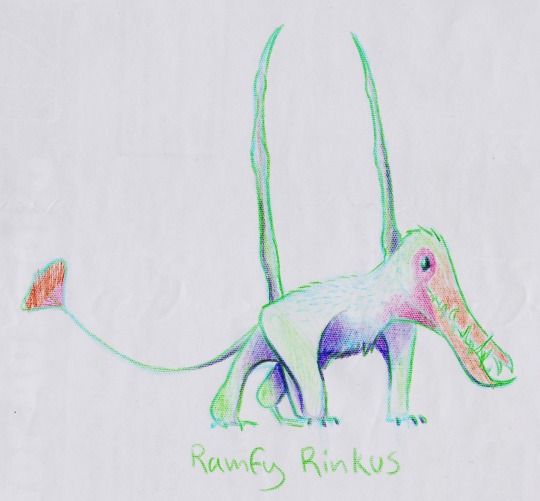
The restaurant I went to tonight with friends had paper tablecloths and coloured pencils "for children to draw with". So I created some Fellows while waiting for pizza :)
Featuring Big Steppy the Edaphosaurus, King Chungo the Vast and Terrible the Cotylorhynchus, and Ramfy Rinkus the Rhamphorhynchus
4K notes
·
View notes
Text


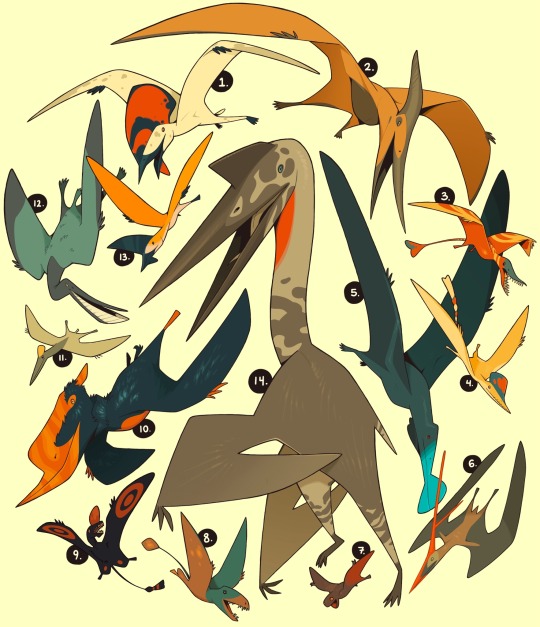
DRAGONS
Hello, I’ve been making more paleoart recently so I’m gonna be updating this blog again after so many years lol.
To begin, some pterosaurs from a while ago.
#my art#paleoart#pterosaurs#tupandactylus#tupandandactylus imperator#pteranodon#rhamphorhynchus#darwinopterus#tropeognathus#nyctosaurus#jeholopterus#dimorphodon#caviramus#dsungaripterus#pterodactylus#tupandactlyus navigans#quetzalcoatlus#paleoblr
2K notes
·
View notes
Photo


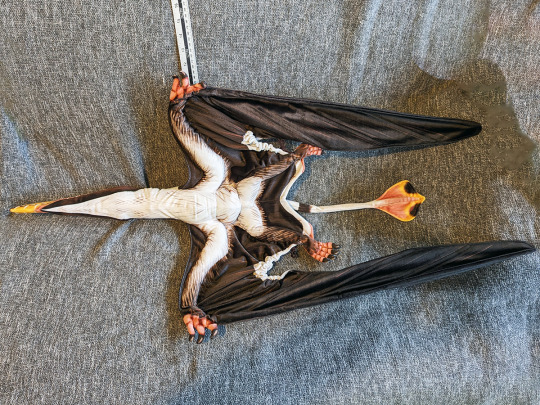
I’m extremely proud of this life-size Dearc even if it took me way too long to finish it. It has a fully pose-able plastic jointed skeleton and fibreglass wing struts, as well as little ties to keep it’s wing membrane under control when in a “landed” position.
This was one of those projects that kinda spiralled out of control. I probably won’t ever make another one...
You can find it over here: https://www.palaeoplushies.com/shop/dearc
2K notes
·
View notes
Text

little lab rat
#path of titans#rhamphorhynchus#im lying by the way i actively have been abusing this power i love pressing a button repetitively and pissing people off
224 notes
·
View notes
Text
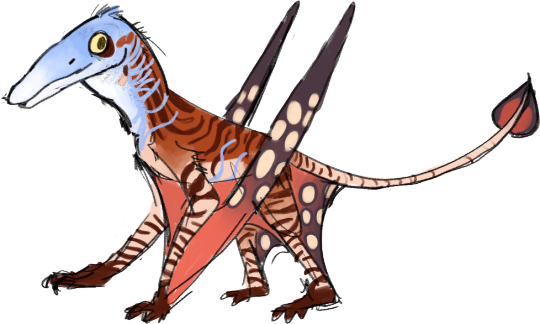
Obsessed with the colors on my random progen. Here's a quick sketch of him as a loosely accurate rhamphorhynchus because I've had pterosaur fever lately.

Here's my gene plan for him (and how he currently looks under the cut.) Orange/tangerine/sky

142 notes
·
View notes
Text

Strange Symmetries #12: Pterosaur Crossing
Rhamphorhynchus muensteri was one of the first pterosaurs known to science, and its snaggletoothed snout and long vaned tail have become classic features of many fictional "pterodactyls". But despite its prevalence in pop culture depictions, it actually seems to have been quite a highly specialized pterosaur compared to its closest relatives – and a few specimens also seem to have an unusual little bit of asymmetry going on.
Living during the Late Jurassic, about 150-145 million years ago, around the warm shallow seas of what is now southeast Germany, Rhamphorynchus had a a wingspan of up to at least 1.8m (~6'), with larger fragmentary fossils suggesting a maximum of around 3m (~9'10").
It had proportionally long wings, splaying intermeshing needle-like teeth, and a toothless beak at the tip of its jaws. The lower beak hooked strongly upwards, while the upper seems to have varied from upwards-curving to straight to downward-curving in different individuals – and some of these arrangements mean the keratinous beak tips must have crossed when the jaws closed, twisting to each side to asymmetrically pass each other similarly to modern crossbill birds.
Several specimens have been found with fish and cephalopod remains preserved in their guts, and along with the pointy intermeshing teeth this indicates Rhamphorhynchus was probably mainly piscivorous, occupying a similar ecological role to modern seabirds.
The different shapes of the toothless jaw tips may suggest there were several distinct populations of this pterosaur species exploiting slightly different food sources to each other, and the crossing beaks may have been an adaptation to pry the soft parts out of hard-shelled prey.
———
NixIllustration.com | Tumblr | Twitter | Patreon
#science illustration#strange symmetries#paleontology#paleoart#palaeoblr#rhamphorhynchus#rhamphorhynchidae#pterosaur#art
531 notes
·
View notes
Text

Meet chicharrón, my stinky little rat from path of titans!
#path of titans#pathoftitans#pot#rhamphorhynchus#paleoart#paleoblr#paleontology#dinosuar#dino oc#dinosaur oc
70 notes
·
View notes
Text

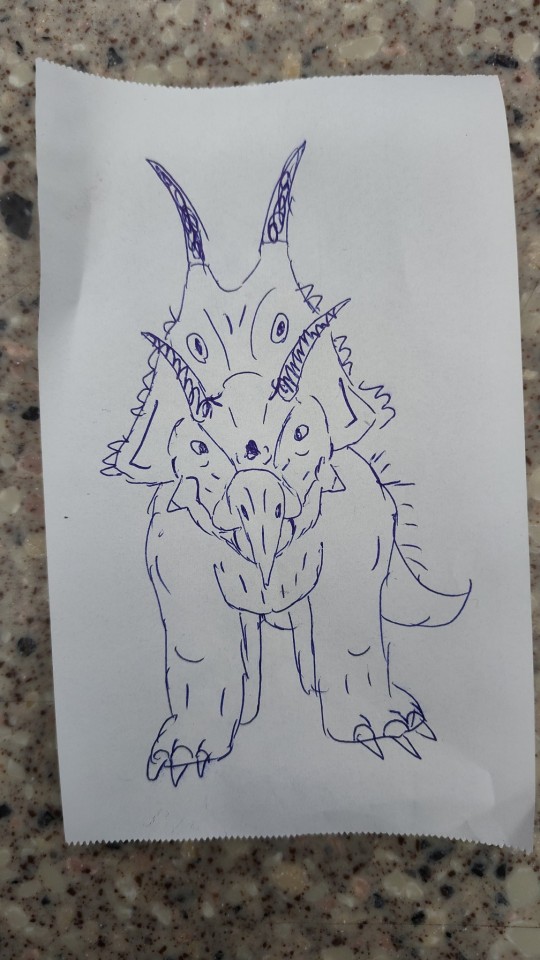

Some silly doodles I did at work
#paleoart#paleontology#dinosaur#dinosaurs#evolution#carnotaurus#tropeognathus#diabloceratops#quetzalcoatlus#tupandactylus#rhamphorhynchus#pterosaur#pterosaurs#ceratopsian
76 notes
·
View notes
Text
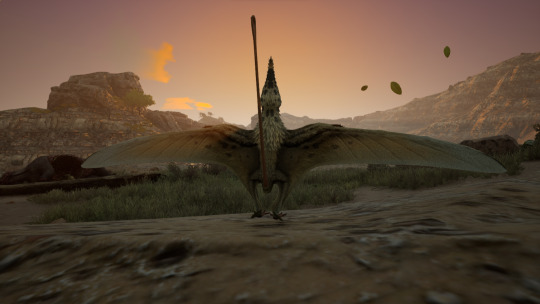
Friendship ended with thalassodromeus
40 notes
·
View notes
Text
Strawberry!

one of my many Pterosaur characters.
59 notes
·
View notes
Text
He is unaware of the danger

38 notes
·
View notes
Text
babys


44 notes
·
View notes
Text

My 21st entry for Jurassic June 2023: Two Rhamphorhynchus muensteri plunge into the warm, shallow tropical waters of what is now the Solnhofen Formation of Germany in pursuit of fish to eat, 150-148 million years ago.
#paleoart#pterosauria#pterosaurs#pterosaur#jurassic period#jurassicperiod#jurassic july#rhamphorhynchus#solnhofen#paleontology#paleontography
83 notes
·
View notes
Text

Animal Ghosts. Edited by Claudia Clow. Illustrated by Walt Disney Productions. 1971.
Internet Archive
94 notes
·
View notes
Text
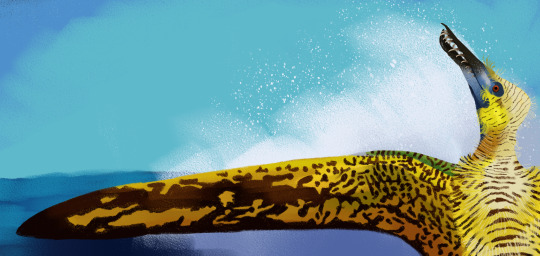
the sea beneath your wings
btw pretty please use my referral code: here
#path of titans#pot#rhamphorhynchus#paleoart#pot making a good design decision is legit once every 2 years im sorry but i've been so dissapointed w the designs of their recent playable#expect for rhamp rhamp is perfect il it's design#i just HATED hateg and achillo + ouugh whatever the playable they dropped before them im sorry they had been just kinda.. boring....#il pot's rhamp it has a lot of personality in it's design and animations compared to hateg n achillo. hes a ugly diseased rat thing.#paleo art#paleontology#paleoblr#pterosaur#my art#art test#art study
23 notes
·
View notes
Photo

Picture 547. Rhamphorhýnchus (Pterosauria). Solnhofen in Bayern.


In the air there was flying lizards (picture 547), small sparrow-
sized and large hawk-sized ones, as well as older, long-tailed
forms and younger, short-tailed. Only the latter mentioned lived beyond the Jurassic. A few fluttered like bats, others soared over the waters like gulls on long wings to catch fish with long, hook-like, outward-turning teeth. A few of the small species might have been insectivores. They probably climbed and crawled like bats. When resting they held on with their fingers, not their toes, and thus hung in an upright position. The shapeless fifth finger provided support to the flying membrane, which extended to the arms and hips of the body. Only this part of the flying membrane is preserved as fossilis, but it is assumed that the membrane was also between the neck and wrist. Some species had a sail in the tail. Pterosaurs and birds have many similar characteristics in their bodies, which are caused by the body conforming to the same way of living. Sternum was large in pterosaurs, bones were hollow. Vertebrae were fused together and made the body sturdy, which was necessary.
ELÄINOPPI Oppikouluja varten, Schulman - Krogerus - Nordström, 1920
46 notes
·
View notes